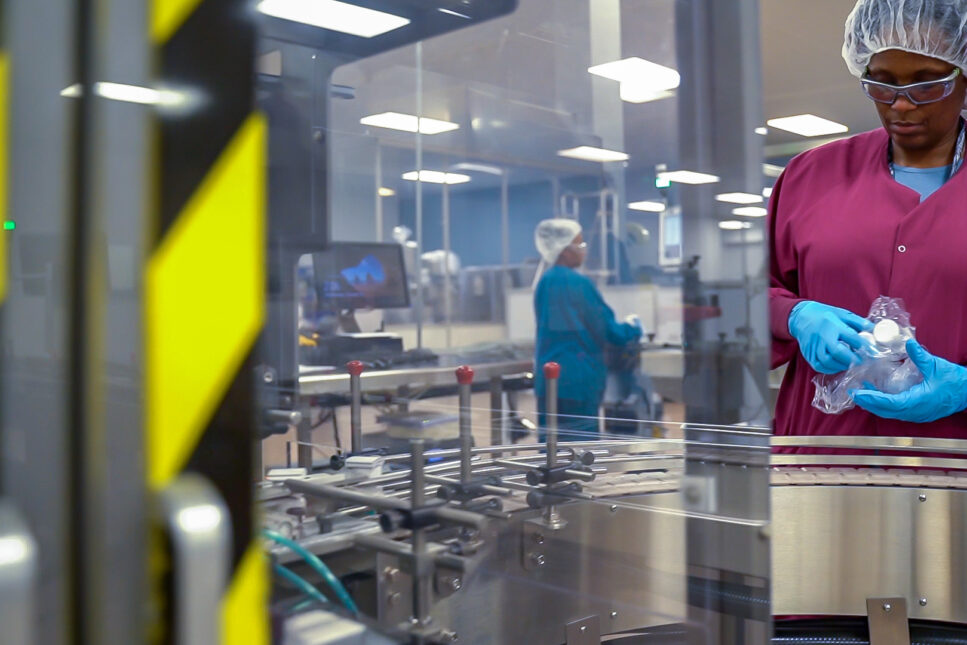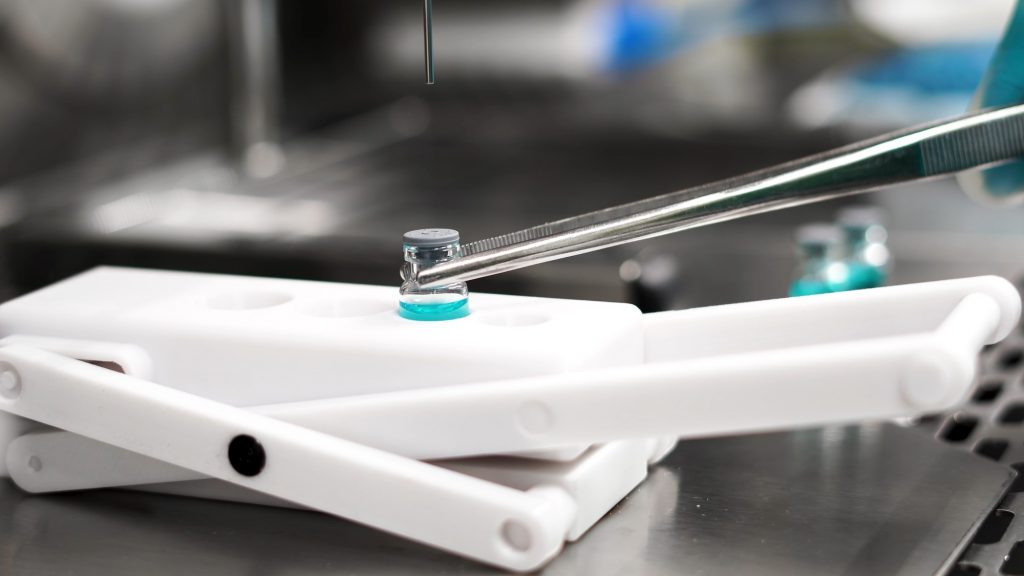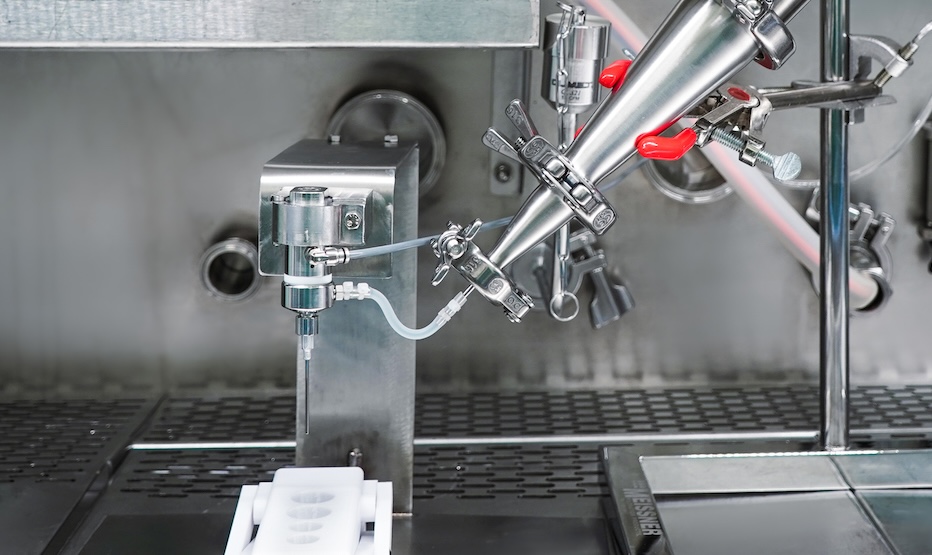John McCullough, Continuous Improvement Director and Justin Ludwig, Operations Value Stream Leader at Sharp discuss how implementing robotics automation and software has the potential to reduce manual labor and limit workplace injuries, among other benefits. Thus, companies should consider switching their practices by adopting new technology.
For decades, robotics has been available, but have been either too costly or difficult to implement. With significant improvements to software and machine learning, along with more cost-effective robot manufacturing, robotics has become a viable option for players throughout the supply chain, including small-scale operations.
Robotics has never been as adaptable as they are today, and this will increase exponentially in the near future. This flexibility, in conjunction with radical improvements in software, will fuel an explosion in robotics implementation.
Robotic Opportunities
Automation offers a wealth of opportunities in the pharma industry. Recent advances in automation technology have made it more accessible and userfriendly. Upgrading or creating manufacturing lines with more automation increases reliability, safety, compliance, security, and, in most cases, efficiency. These benefits have made automation more than a showpiece for high-value lines, but a major component in modern manufacturing.
Safety and reliability are indispensable to a successful manufacturing line. Automation facilitates these paramount metrics by removing the biggest cause of failures in both: human interaction. Automating processes also create consistency in work performed, essentially eliminating human error in specific tasks. Ergonomic hazards are a major safety concern in manufacturing as employees are subjected to repetitive motion tasks, vibration, excessive forces, and awkward positions. Similarly, certain situations require the employee to perform potentially dangerous tasks that force safety measures to be taken. Additionally, the reliability of robotics ensures the quality of the product as well as reducing lost time and morale due to re-work.
Compliance with regulations, as well as product security, is equally important. Ensuring everything produced on a manufacturing line is compliant with regulatory requirements and to the demands of contractors and customers is imperative. Automation provides dependability that a process will be completed as designed every time, removing human intervention, which is inherently more at risk of deviation.
Robotic automation also increases reliability to assist in planning and enables more valuable resources to be allocated to tasks that match skill levels. Replacing an employee with a dependable, flexible asset not only contributes to compliance, but also security. Certain classes of pharmaceuticals require secure locations operated solely by trained and vetted employees. Using a valuable, skilled employee for unskilled tasks, such as placing a product in a carton, is a waste of an important resource. Removing that person allows them to take on more significant tasks. This also contributes to the security of the product by reducing the number of people coming into contact with it and the opportunities for diversion.
Project Management and Sponsorship
An active and engaged sponsor is imperative to getting the first robot off the ground. With every improvement, the capabilities and scope of the technology increase, and this constant progression can often lead to unforeseen opportunities that spark debates among project teams. A strong sponsor is needed to effectively coerce interdepartmental cooperation that drives change and remove organizational roadblocks or impasses. However, they must allow the team to be led by different departments on a project-by-project basis. By having subject matter experts lead the team at different stages, they can apply their knowledge and skills for the best possible outcome for that stage of the project.
The two departments that are typically major contributors in the implementation are operational excellence (OpEx) – responsible for continuous improvement – and operations – responsible for technical manufacturing.
OpEx typically helps identify opportunities or establish the need for robotics and automation. In most organizations, the process begins with operations sponsorship before engineering teams choose the automation technology and work together with procurement departments to vet and select vendors. Implementation is then managed by technical resources, sometimes in partnership with third-party support.
Planning for Automation
Although robotics is great for certain tasks, often simpler and more financially viable solutions are available. Businesses must fully consider every option and ensure that robotics is the right solution for the automation need. When using robotics for tasks currently performed by humans, the work is presented to the robot in each cycle in the same way, and that work is likely to change. In those situations, the flexibility of robots really shines. After this, the most important part of the planning stage is the scope.
A clearly defined scope of what this robot will do and an ‘out of scope’ list is essential. Deciding exactly what is needed determines the vendor, type of robot, and functional team members required.
During the planning phase, some other considerations beyond suitability of application are:
- Rightsizing the robot, which means choosing one that meets the requirements of the application (speed, payload, reach, etc) without potentially spending extraneous capital on features/capabilities that are not needed
- Whether the robot needs to be collaborative
- Optical requirements for the robot to be capable of completing the task
Importantly, several project subtasks may make robotic implementation easier and more efficient. The reliability and cycle time for robots can sometimes be improved when changes are made to operations around the robot. For example, if the robot is performing an inspection, some additional engineering around the positioning of the inspected object, and perhaps lighting, will help with repeatability and accurate inspection.
Successful Implementation
Setting up the robot to perform the desired task is often the easiest part of the implementation process. Organization and timely execution of the outside processes tend to be more problematic. Trying to get everything in order without letting the project lose steam is the biggest obstacle and requires a significant amount of collaboration and cooperation.
The three major stages of the implementation are: design and build, installation, and documentation:
- Documentation is continuous and is the likeliest stage to be interrupted. Beyond the initial capital request, documentation is likely to include change control request, engineering studies, process validation and qualification, acceptance testing,
install/operation qualification, and commissioning documentation - Design and build revolve around how the robot is going to physically interact in the process. Considering whether it is going to be attached to a current asset or if an individual base is going to be built, whether the robot is going to be portable or permanent in a process, and how it will interact with the other assets and people is important. Once these questions are answered, the stand or mounts can be built and the programme designed
- Finally, the installation phase revolves around getting time to install the asset and ensuring that production is scheduled accordingly is a must to avoid downtime
Getting as much paperwork done as possible and ensuring all equipment and documentation change controls are completed before implementation begins is essential. A test environment should be set up to enable the programming of the robot’s logic controllers, and, if the robot is portable, it should be validated separately so that the process validation will be minimal.
Impact on Business Processes
As with any new asset, adding it into a production environment requires cross functional cooperation. The depth of the process changes depending on the required functionality of the robot. Once this functionality is designed, an evaluation of the process must be conducted. Using a pick and place robot as an example, once the path is designed, the validation documentation of the other assets and the process altogether are assessed. The robot is independently validated, but due to the flexibility, every
production process needs a separate pharmacovigilance run. Introducing a robot will also lead to packaging record updates to include the robot and any other features it uses. This may involve more than just updates to the process, but quality inspections and challenges as well. Including documentation and planning/scheduling personnel to organise these updates is important.
The Future of Automation
Implementing robotics automation requires careful planning, dedicated project leaders, and business-wide buy-in, but its scope justifies any operational burdens.
One of the main objectives of robotics implementation is to reduce manual labor. Employees should be valued for their ability to think, reason, and solve problems, and highly repetitive manual tasks mean that businesses are not engaging the employee’s creativity and ingenuity. Also, when manual labor requirements are reduced, the opportunity for workplace injuries drops concurrently. Due to these many benefits, the adoption of robotics within the pharma industry is set to increase. Now is the time to consider the impact of this trend on business operations and prepare for a future of greater automation.





